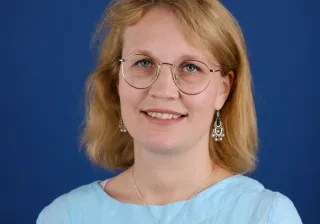Professor of Chemistry Ossian Aschan had a dream when research institutes were set up throughout Europe in the early 20th century. He wanted Finland to also have a research institute to respond to the international competition and to urgently improve the status of scientific and technical research. So, what is the history of VTT? How about the role of research and research centres now and in the future, President & CEO Antti Vasara?
“Hopefully we are still the same VTT as 80 years ago – like a catalyst that speeds up renewal and keeps the wheels of society spinning with innovations”, Vasara says.
VTT was founded in 1942 in wartime Finland by the order of President of Finland Risto Ryti. Back then, the duty of VTT was to carry out technical research for scientific purposes and for the general good. The research institution was intended to contribute to the post-war rebuilding. At first, the activities focused on performing tests and trials, but the emphasis gradually shifted step by step to research and innovation.
The idea of science and technology creating something useful for the whole society is fundamental. That central purpose has not changed, but instead the emphases and methods have varied over the years."
If VTT were to be invented today, the purpose would be roughly the same, but the themes would be different: green transition, digitalisation and sustainability in the midst of crises, not forgetting new tools to address these issues.
Over the past 80 years, the company has seen a huge number of people, and their influence is reflected in what we have achieved and what we are today. We can own the finest equipment and laboratories, but they are nothing without the knowledge between the ears. VTT aims to continue to employ those who want to do something difficult yet meaningful.
World is not a zero-sum game
Many are concerned about the future due to the constant cycle of negative news. According to Vasara, VTT's way of channelling this concern is to put a lab coat on and work towards a better tomorrow.
Our role is to create solutions and thus hope. It is important to bring information about the possibilities of science and technology to everyone from ordinary people to decision-makers. This helps to find solutions and overcome challenges.”
Hope is exponential for us at VTT, and exponential refers to the accelerating pace of change. Science and technology are evolving at an ever-increasing pace thanks to previous innovations. For example, quantum computers and hyperspectral cameras make research increasingly faster by providing more information and higher computing speed. A new innovation opens up more doors, and VTT has paved the way as a pioneer, for example in cellular agriculture. The enormous increase in living standards over the past 80 years also reflects the accelerating pace. Vasara also reminds us that the world is not a zero-sum game where some have to get poorer for others to get rich. The more people are doing well, the better it is for everyone.
However, although the pace of change accelerates as a whole, it is very challenging to anticipate which individual areas will progress by leaps and bounds and which at snail's pace.
“Let's compare where we are today to the movie Back to the Future. Our daily communication tools are incredible sci-fi compared to the film’s predictions, where faxing and video calls from home were dreams of the future. Fax machines have been history for a long time, but then again, we have not yet created flying cars that run on fusion power from waste”, Vasara laughs.
But I am an optimist. I believe that society will overcome its challenges. Naturally it means that society will look totally different and much better in 80 years’ time.”
Did Aschan's dream come true in the end? One could say so: he was involved in establishing the Central Laboratory for Industry, and although it is not VTT, the seed of research centres had been planted in Finland. What VTT is today is exactly what Aschan dreamed of: research, development and pioneering.
Did you know?
The first patent of VTT dates back to 1945, just a few years after the company was founded. The patent concerned the manufacturing method of hard and firm lignocellulose plates. To date, VTT has nearly 2,000 patents or patent applications in about 400 patent families.



